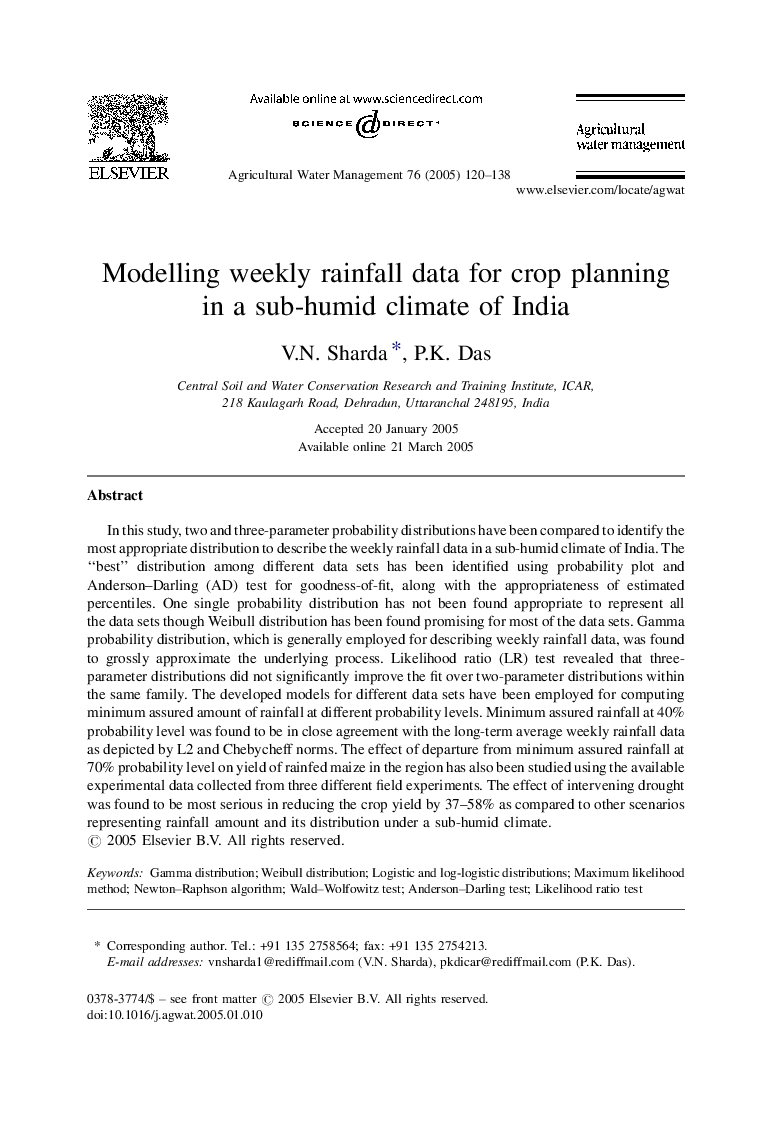| Article ID | Journal | Published Year | Pages | File Type |
|---|---|---|---|---|
| 9467307 | Agricultural Water Management | 2005 | 19 Pages |
Abstract
In this study, two and three-parameter probability distributions have been compared to identify the most appropriate distribution to describe the weekly rainfall data in a sub-humid climate of India. The “best” distribution among different data sets has been identified using probability plot and Anderson-Darling (AD) test for goodness-of-fit, along with the appropriateness of estimated percentiles. One single probability distribution has not been found appropriate to represent all the data sets though Weibull distribution has been found promising for most of the data sets. Gamma probability distribution, which is generally employed for describing weekly rainfall data, was found to grossly approximate the underlying process. Likelihood ratio (LR) test revealed that three-parameter distributions did not significantly improve the fit over two-parameter distributions within the same family. The developed models for different data sets have been employed for computing minimum assured amount of rainfall at different probability levels. Minimum assured rainfall at 40% probability level was found to be in close agreement with the long-term average weekly rainfall data as depicted by L2 and Chebycheff norms. The effect of departure from minimum assured rainfall at 70% probability level on yield of rainfed maize in the region has also been studied using the available experimental data collected from three different field experiments. The effect of intervening drought was found to be most serious in reducing the crop yield by 37-58% as compared to other scenarios representing rainfall amount and its distribution under a sub-humid climate.
Keywords
Related Topics
Life Sciences
Agricultural and Biological Sciences
Agronomy and Crop Science
Authors
V.N. Sharda, P.K. Das,
